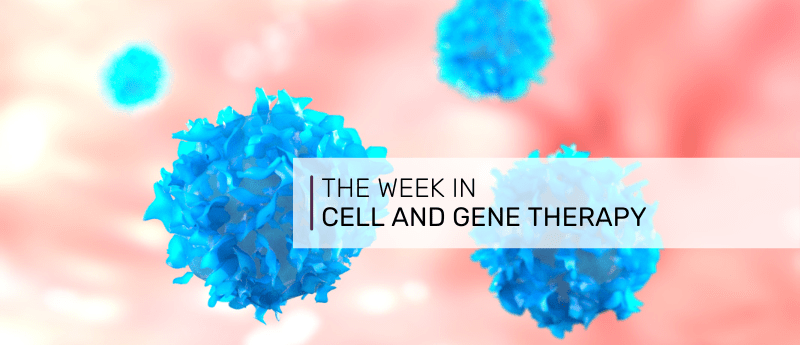Cell therapy weekly: Vertex licenses ImmunoGen’s antibody-drug conjugate technology for gene editing research

This week: Vertex licenses ImmunoGen’s antibody-drug conjugate technology for gene editing research, positive data from Krabbe disease gene therapy trial presented at WORLDSymposium and Thymmune lands US$7 million to develop thymus cell therapy platform.
The news highlights:
Vertex licenses ImmunoGen’s antibody-drug conjugate technology for gene editing research
ImmunoGen (MA, USA) has signed a global, multi-target license agreement granting Vertex Pharmaceuticals (MA, USA) the rights to utilize ImmunoGen’s antibody-drug conjugate (ACD) technology for research into novel targeted conditioning agents for use with gene editing. ImmunoGen will receive an upfront payment of US$15 million and will also be eligible to receive up to US$337 million in option exercise fees and development and commercial milestone payments per target.
“Given Vertex’s extensive experience discovering and developing transformative medicines for patients with serious diseases, we are thrilled they have chosen to explore ImmunoGen’s technology to develop ADCs for transplant conditioning in connection with gene editing,” said ImmunoGen’s Executive Vice President of research, development and medical affairs, Michael Vasconcelles. “This agreement reflects our continued innovation in the ACD space and demonstrates the value of our technology platform and related intellectual property.”
Positive data from Krabbe disease gene therapy trial presented at WORLDSymposium
Maria Escolar, Chief Medical Officer of Forge Biologics (OH, USA), presented updated data from the company’s Phase I/II RESKUE clinical trial at the 19th Annual WORLDSymposium™ (22-26 February 2023; Orlando, Florida, USA). The trial is investigating FBX-101, a novel AAV gene therapy for the treatment of patients with Krabbe disease, a rare neurodegenerative disease caused by autosomal recessive mutations in the galactocerebrosidase (GALC) gene. FBX-101 delivers a functional copy of the gene to cells in the central and peripheral nervous system.
“We are encouraged by the continued safety and efficacy observed in FBX-101 treated patients. Notably, some of the patients were identified by newborn screening, which enabled early disease intervention,” stated Dr. Escolar. “All patients to date have exhibited normal motor function and brain development six and 12 months post-FBX-101 administration, which would not be anticipated in the absence of systemic gene transfer of the GALC gene. We also observed up to 170-fold and 10-fold increases in plasma and cerebrospinal fluid (CSF) GALC levels, respectively, during the six and 12 months follow-up milestones, demonstrating sustained, high expression of the GALC transgene. Importantly, no treatment-related serious adverse events, liver enzymes elevations, nor development of anti-AAVrh10 antibodies have been observed after FBX-101 systemic administration. These results are very encouraging and provide hope for the families impacted by Krabbe.”
Thymmune lands US$7 million to develop thymus cell therapy platform
Thymmune Therapeutics (MA, USA) has secured US$7 million in seed financing led by Pillar VC (MA, USA), with participation from NYBC Ventures (MA, USA) and other investors. Thymmune will use the financing to advance the company’s lead product THY-100 into preclinical studies in immune disorders resulting from thymic deficiencies. The thymus is responsible for regulating and developing T-cells, and so thymic deficiencies result in a lack of functional T-cells.
“Thymmune’s approach to mass-produce iPSC-derived thymic cells to restore immune function in patients is a breakthrough for the field of thymic regenerative medicine. This treatment is less invasive than surgery and can be replicated at high quality at scale,” said Thomas de Vlaam, Principal, Pillar VC. “In the future, regenerating the thymus using Thymmune’s approach could improve immune function for a variety of diseases and even address the biology of aging.”